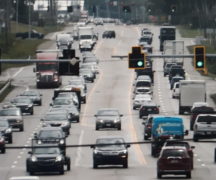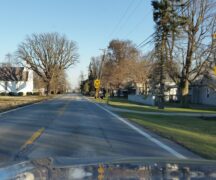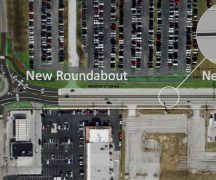By JAN LARSON McLAUGHLIN
BG Independent News
Drivers in this part of the state have become very accustomed to encountering orange cones the last few years. As the Ohio Department of Transportation worked to widen Interstate 75 from two to three lanes, it became commonplace for drivers to have to maneuver around construction zones.
That may have helped lead to some of the 6,000 work zone crashes in Ohio last year, according to Rebecca Shirling, spokesperson for ODOT District 2 in Bowling Green.
So as a reminder to drivers to slow down in work zones, ODOT placed a display at the northbound rest area on I-75, just south of Bowling Green. The display represents 26 workers who were killed last year statewide in road work zones. That includes ODOT workers, tow truck drivers, law enforcement and utility workers.
“These are people who didn’t go home,” Shirling said. “It’s frustrating waiting in traffic sometimes, but we forget these people had families to go home to.”
The display is intended to be a stark reminder of the consequences of not paying attention.
“We’ve had so much construction that people are becoming numb to it,” Shirling said. “We had a lot more work zone crashes. We had a larger construction zone than previous years.”
Though message boards are being used to stress the reduced speed limits, they don’t always result in drivers slowing down.
“A large percentage were people following too closely or being distracted by the work going on,” Shirling said.
ODOT is working more closely with law enforcement and emergency responders to get roads open as soon as possible after crashes, so backups are reduced. And speed limit signs are being posted in work zones that aren’t active, to let drivers know they don’t need to slow down needlessly.
Extra safety precautions are also being used for night crews, including halo lights on their helmets, and reflective markers on their sleeves and pantlegs. Night crews benefit from lighter traffic, but are at greater risks due to reduced visibility.
The memorial along I-75 was intended to be a reminder to motorists that while road construction may delay their travels, that the people working in them also want to get home.
“We just want people to see the visual,” and think, Shirling said.





